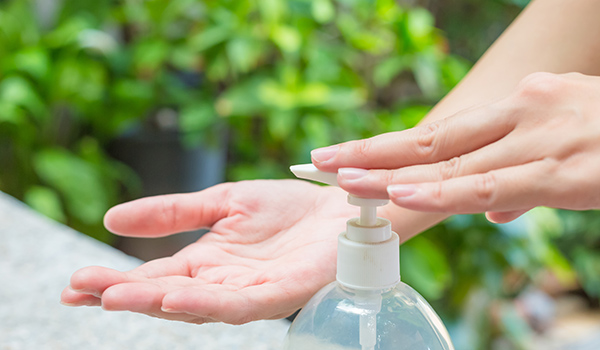
Since the COVID-19 pandemic began, it’s commonplace to find the shelves that once contained hand sanitizers and household disinfectants empty and people are saying that they can’t find sanitizer. If you want to lay hands on what is now a precious commodity, you either have to know the store’s delivery schedule or show up very early in the morning to find it. What is accounting for the continued shortage in hand sanitizers, household cleaners, and disinfectants?
Between December 2019 and January 2020, the demand for hand sanitizers alone went up by 1400%. The demand for popular household disinfectants has gone up by a similar rate. Before this, companies were manufacturing this product at an excess – which meant people were not really buying it. As such, during the pre-pandemic era, there was no need to make sanitizers in large quantities.
The pandemic has meant manufacturers have to ramp up production a thousand times over. And that type of demand is not easy to meet with the current manufacturing capacities of most companies.
But are hand sanitizers and popular disinfectants the “end-all-be-all” of COVID-19 prevention? In this post, we’ll go over what you can do if you are still facing a shortage of hand sanitizers and household disinfectants in your area.
What you can do if you can’t find sanitizer?
It’s important to know exactly what a hand sanitizer is and how it works. Most hand sanitizers sold in the United States contain 60-70% ethanol (liquor/alcohol) or isopropyl alcohol (rubbing alcohol).
It’s important that the sanitizer contains these percentages of alcohol so it can effectively get rid of bacteria and viruses. The alcohol in the sanitizer works by destroying the viral envelope – a kind of “coat” that allows a virus to live and cause illness.
Based on that mechanism alone, hand sanitizer is not the only solution to keeping Sars-COV-2 away. Washing your hands with soap and water for at least 20 seconds achieves the same effect.
And it does not have to be specialty “hand soap” either. Bar or liquid soaps work well to get rid of most bacteria and viruses. Just like the alcohol in hand sanitizers, your bar or liquid soap will break the envelope that holds bacteria and viruses together and will essentially kill them off.
What about sanitizing surfaces?
Apart from washing your hands, it is more important than ever to sanitize the surfaces in your home. Again, as far as household cleaners are concerned, you may find that it is difficult to find these in stores.
If you’re facing this, there are alternatives that work just as well.
10% bleach solution – Mix nine parts of water to one part of bleach in a container that you use for cleaning. Bleach is harmful to the body if ingested so make sure to keep this away from your mouth and especially from children. Once you make the bleach solution, you can put it in a labeled spray bottle. Spray this on any surface you want to disinfect. Let the bleach sit on the surface for at least 10 seconds, and then wipe with a dry cloth.
Hydrogen peroxide – Although this has also become an item in shortage in recent months, you are more likely to find hydrogen peroxide on store shelves than some popular household cleaners and disinfectants. A hydrogen peroxide solution of 3% is effective against most bacteria and viruses. Most stores sell hydrogen peroxide at that concentration. Just like we mentioned for the bleach solution, you can place the 3% hydrogen peroxide in a spray bottle, and use that to disinfect surfaces.
Bleach and hydrogen peroxide are both products you are likely to find at your local store even if popular, brand name disinfectants are in short supply. And they work just as well if you can’t find sanitizer.

